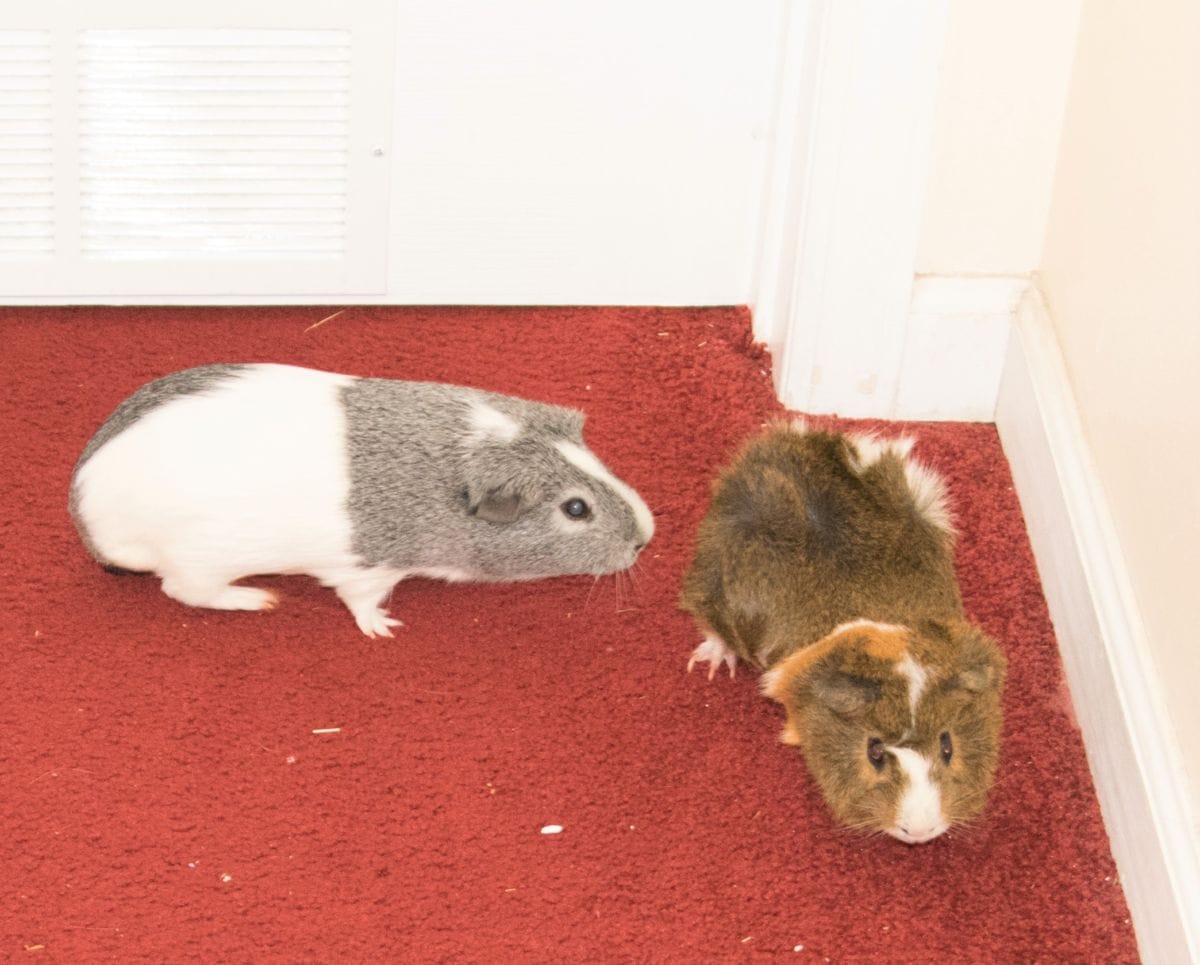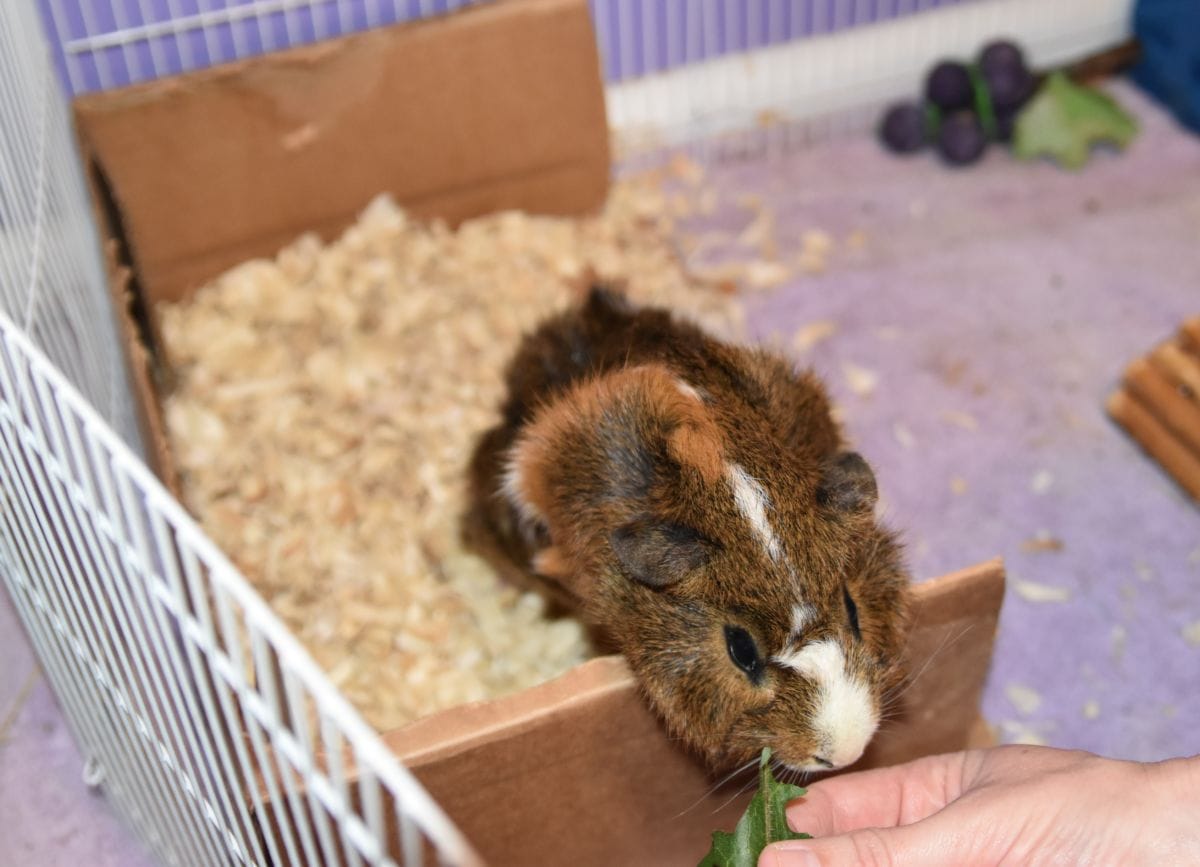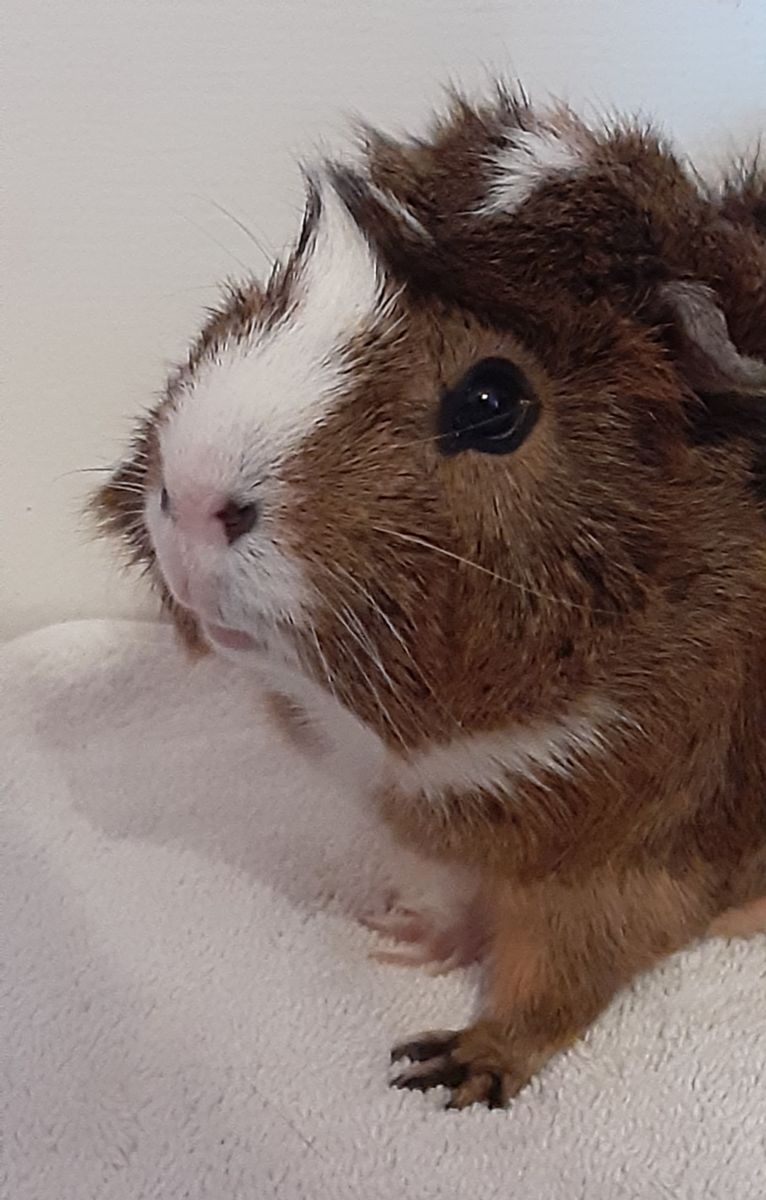Yes, guinea pigs can learn tricks! But often they will need to build some confidence in doing tricks by starting with easier ones. To help with this, I have put together 3 easy tricks that are great to start out with!
Here are the 3 starter tricks we will talk about:
- Paws-up
- Come
- Beg
Let’s dive deeper into teaching these tricks!
Clicker Training
To reward a guinea pig when you’re training it, you should first clicker train it.
Clicker used for larger animals, such as dogs, are small boxes that makes a click sound when you push one side of it. This kind of clicker is often much to loud for a guinea pig’s sensitive ears, so a clicky pen usually works better.
For clicker training a guinea pig, you will need a clicker and some treats. Now, click the clicker, then give the guinea pig a treat.
Keep repeating this until when you click the clicker your guinea pig looks at you and expects a treat; once it is at this point, wait until your guinea pig loses interest in the clicker, then click and give a treat. Practice this as many times as necessary until the piggy gets it.
Some guinea pigs are afraid of the clicker; if this is the case with your piggy, you should say a one syllable word or sound instead of use a clicker.
Training Methods

Luring
Luring is teaching your guinea pig tricks using a lure, which is a treat, to guide them into position.
This method can be used with several different tricks, including each trick we will learn about in this article. Luring is great to use if your guinea pig has a very short attention span since they are motivated by food.
Just sure you use treats that your guinea pigs like so they will follow it, and once your guinea pig knows the trick well enough make sure you fade the lure.
To fade the lure, start by moving the lure faster when you practice the trick so the guinea pig relies less and less on the lure, then, when the piggy is ready, take the lure away completely.
After you take away the lure, only use it if the guinea pig is stuck.

Targeting
Targeting is a training method which is very similar to luring.
The difference with targeting is that you don’t use a treat to guide the guinea pig in place, you use a target that the guinea pig has been trained to follow. The target won’t need to be fancy.
To teach a guinea pig to follow the target, you will need a target, a clicker and treats (make sure he or she likes them).
Take out your target and wait. Don’t move the target around at this point. Once the piggy touches the target with its nose, click and give him (or her) a treat. Keep doing this until your piggy will follow the target around.
Unlike a lure, though, a target doesn’t need to be faded.
Shaping
Shaping is teaching tricks in a step-by-step fashion. There are two ways to shape, free shaping and shaping with luring. Let’s learn more about them.
Free shaping is waiting for the guinea pig to do each step without help, then rewarding it.
Shaping with luring is using a lure to get the guinea pig to do each step, then rewarding it. With this type of shaping, the lure should be faded once the piggy knows the trick well enough.
Getting Ready for Training
Guinea pigs will need to be tame before you begin teaching them tricks. Your guinea pig should tame enough to eat bite-sized pieces of food from your hand. Also, it should able to follow a lure or a target.
You will also need a calm, quiet place for training sessions. The place should be familiar to your piggy as well.
You will need your guinea pig’s favorite treats for each of these tricks as well as these materials:
For Paws-up
- Objects of various shapes and heights
For Come
- A clicker (unless you use a verbal marker for training)
For Beg
- A clicker (unless you use a verbal marker)
Introducing a Cue Word
Once your guinea pig has learned to do whatever trick you taught it, you should reward it with a cue word. A cue word is a one to two syllable word that you will introduce after your piggy has learned the trick.
A cue tells your piggy when it is time to do the trick. (If you teach a trick with targeting, though, you will not use a cue, instead, to tell your piggy to do the trick you will just pick up the target and guide your pet).
To reward your piggy with a cue, say the cue word you picked, click and then give it a treat (I will write when to introduce the cue for each trick).
At first, your piggy will not know that the cue means they have to do the trick. But once they do, say the cue to tell them when to do the trick, then reward them by clicking and giving a treat.
Let’s learn about those tricks!

Paws-Up
Paws-up is a great confidence builder for guinea pigs! It is not the kind of trick that you will be amazed that a guinea pig can do, but it’s good to start out with.
Paws-up builds your piggy’s confidence with putting their front feet above the ground and it can also help improve balance.
Teach Paws-Up using Shaping with Luring
Grab a wide and short object first, such as a small Frisbee. Use a lure to get your piggy to put both its front paws on the object. Once it does, reward with a treat. Repeat a few times.
Now move onto a harder object, such as a small Tupperware container. Practice this a number of times. Next try even more challenging objects, such as a Tic-tac box turned sideways.
Now, start fading the lure.
Teach Paws-Up with Free Shaping
Teaching this trick with free shaping is almost the same as using shaping with luring, just wait for the piggy to put their front paws on the object instead of luring it onto it.
Teach Paws-Up with Targeting
Teach it the same as you would using shaping with luring, but use a target instead of lure to get your guinea pig to put its front paws on the objects.

Come
Come is a well-known trick. It is easy to teach, which makes it a great starter trick.
Teach Come with Free Shaping
Sit near the guinea pigs’ cage with some treats, preferably vegetables.
Call your guinea pigs (make sure the cue is 1-2 syllables long).
Once they come for food, click (or use a verbal marker) and give them the treats. Repeat this until they are running to you when you call them.
Now, try having your guinea pigs come to you when they’re outside of their cage. Get them out for floor-time and sit pretty close to them with some treats.
Call your guinea pigs like before and once they come to you, reward them with a clicker (or verbal marker) and treats. Practice calling your guinea pigs to you, sometimes in the cage and sometimes during floor-time.
Once your piggies come running to you when you call them wherever they are, try moving farther and farther away each time when you practice. Also, practice in different areas.
For even more of a challenge for your guinea pigs, try going were they can’t see you and calling them then. If they don’t come, step out were they can see you and call them again.

Beg
Beg (or stand up) is a good trick for improving balance. It is a good early on trick, but probably shouldn’t be the first trick your guinea pig learns, since it does require a good amount of balance on your guinea pig’s part.
Some guinea pigs may have poor balance and/or not be confidant with lifting their paws off of the ground, so if this is the case with your piggy, try teaching them paws-up before teaching beg.
Teach Beg using Shaping with Luring
Hold a treat over your guinea pig’s nose. Slowly raise it upwards; once your guinea pig lifts one or both paws even slightly off the ground by clicking and giving a treat.
Once your piggy becomes more confidant with lifting their paws off the ground, have them stand up a little higher each time, but don’t ask for too much too early.
Now start teaching them to stand up longer by having them nibble on their treat for a little bit while they’re still standing up. Practice several times.
Now, start fading the lure, then introduce a cue word.
Teach Beg with Free Shaping
Teach the same way you would if you taught it using shaping with luring, except wait for them to lift their paws off of the ground instead of using a lure.
Remember to be patient with your guinea pig during training!






